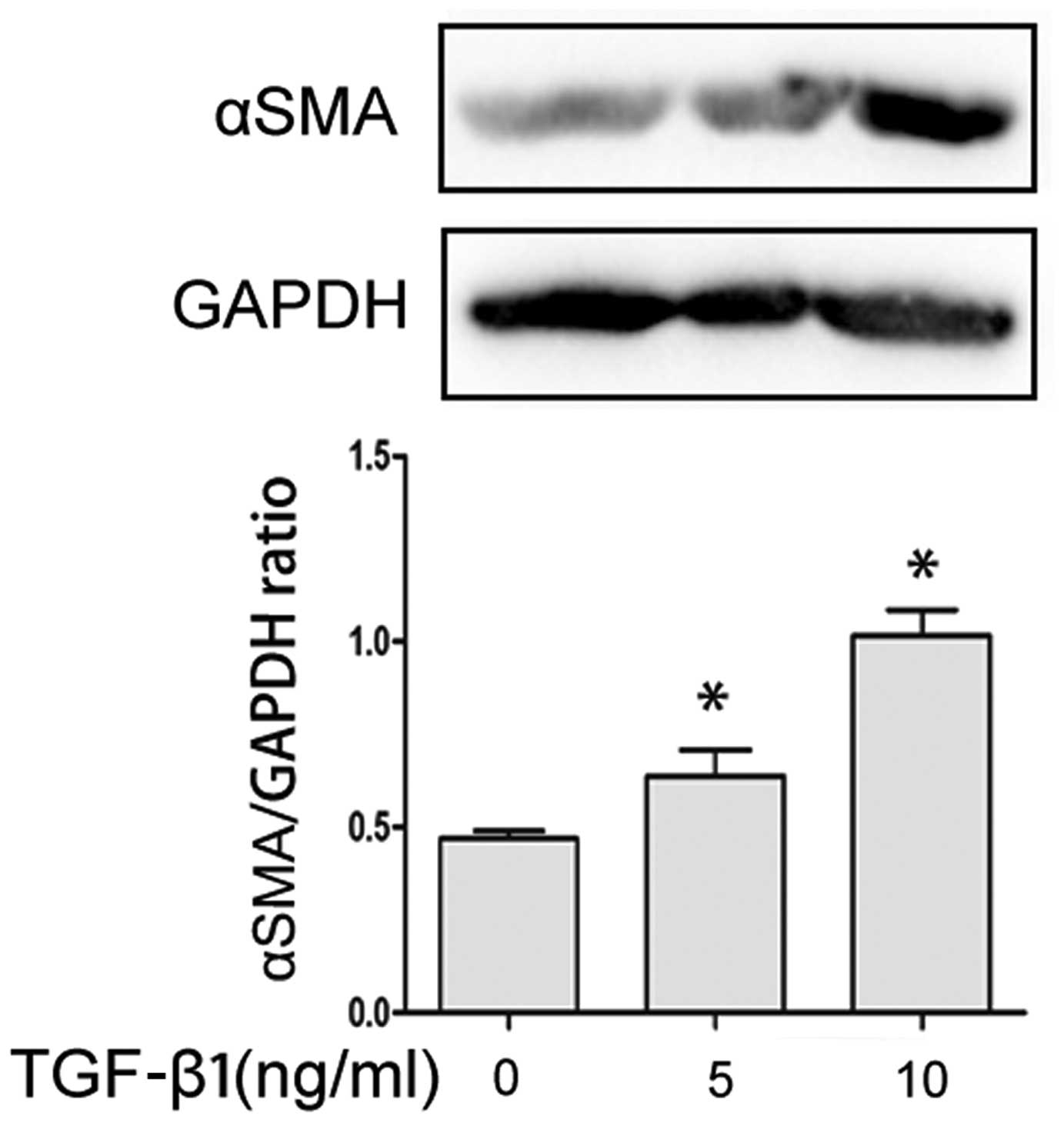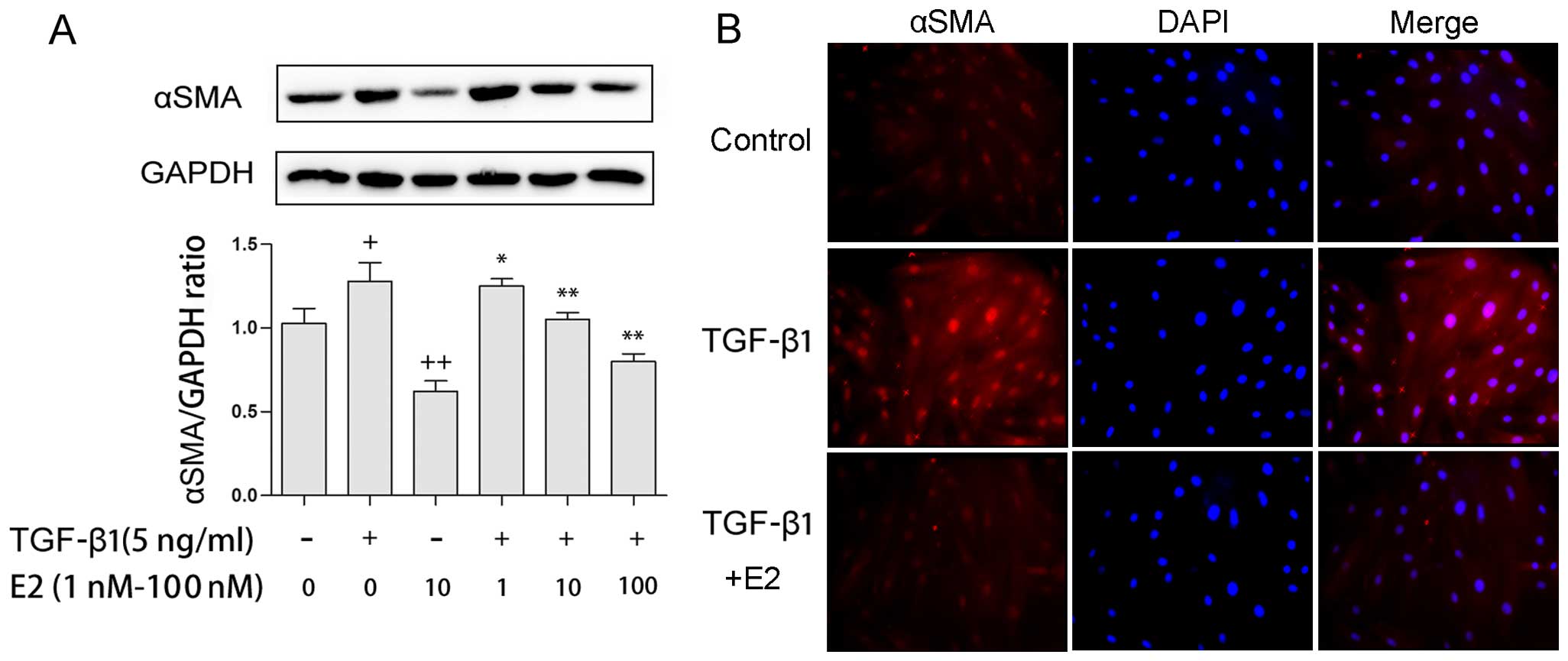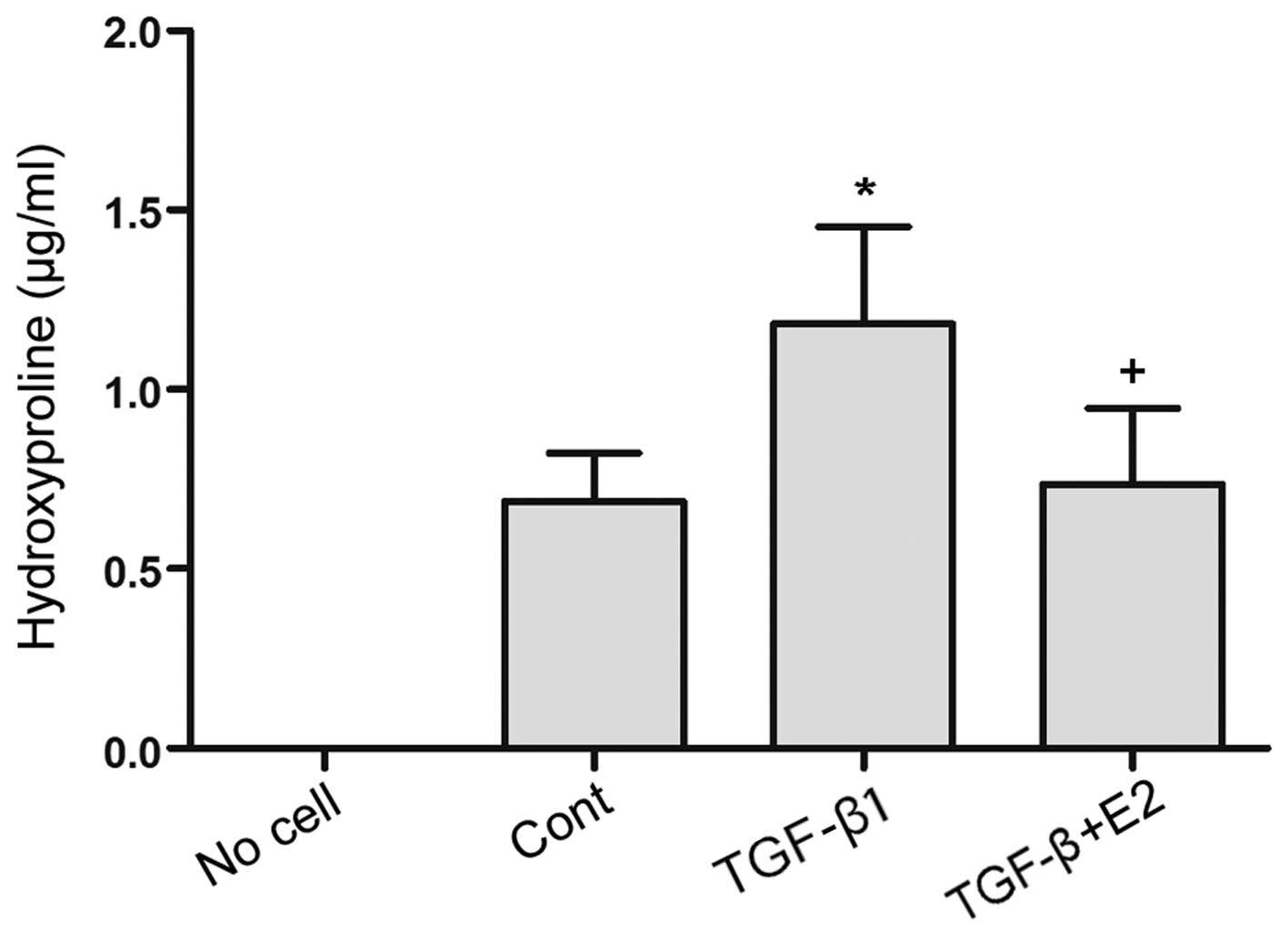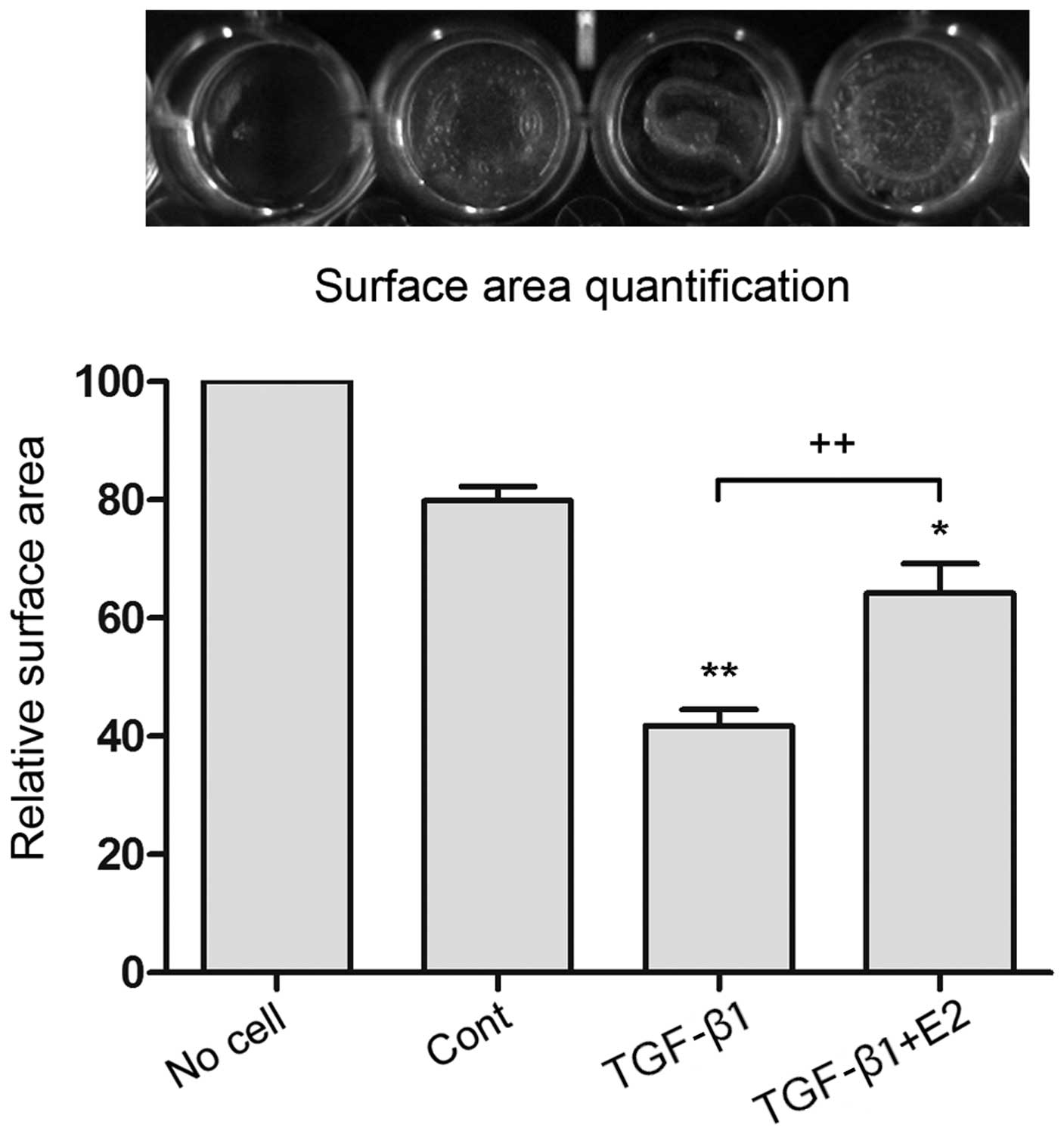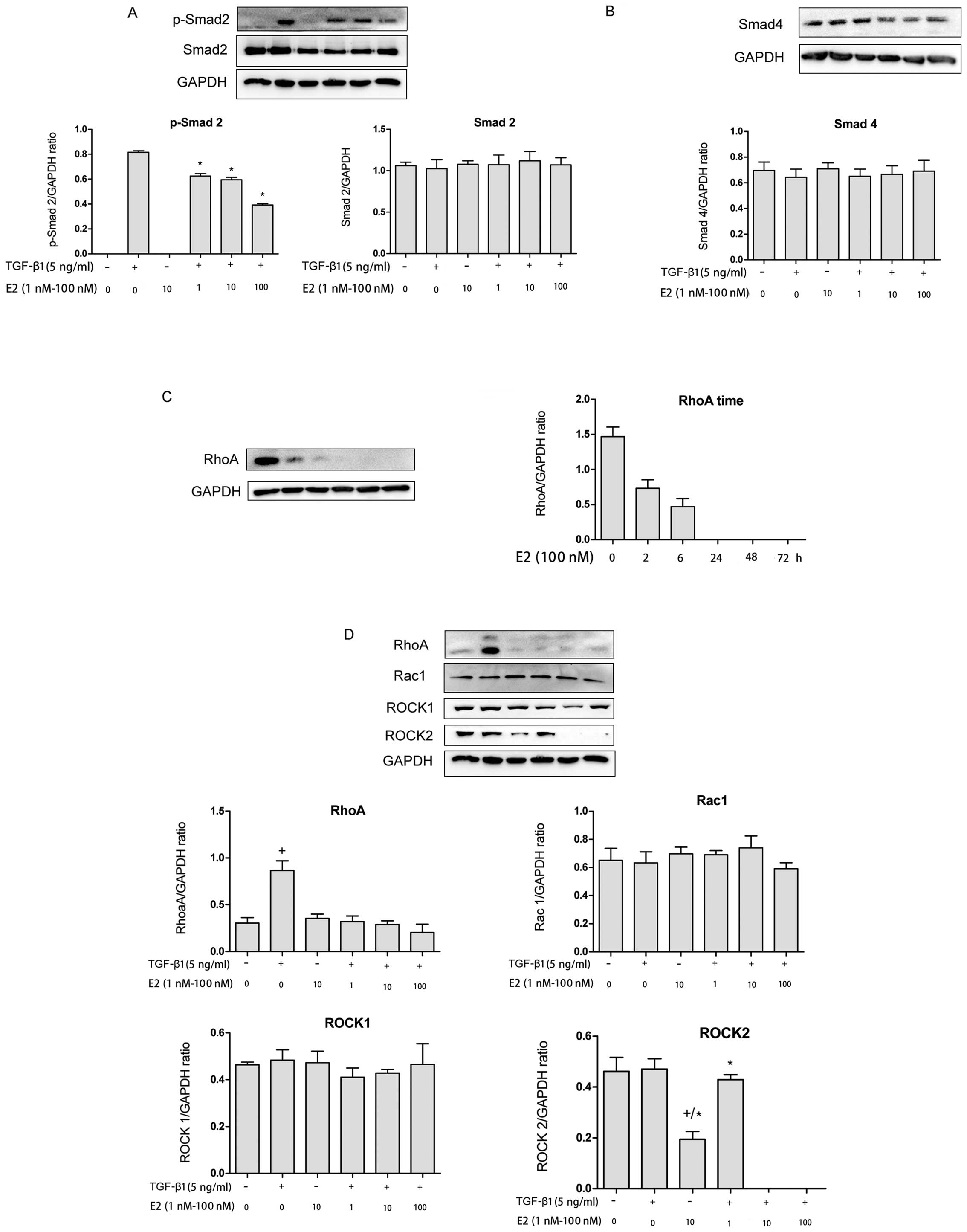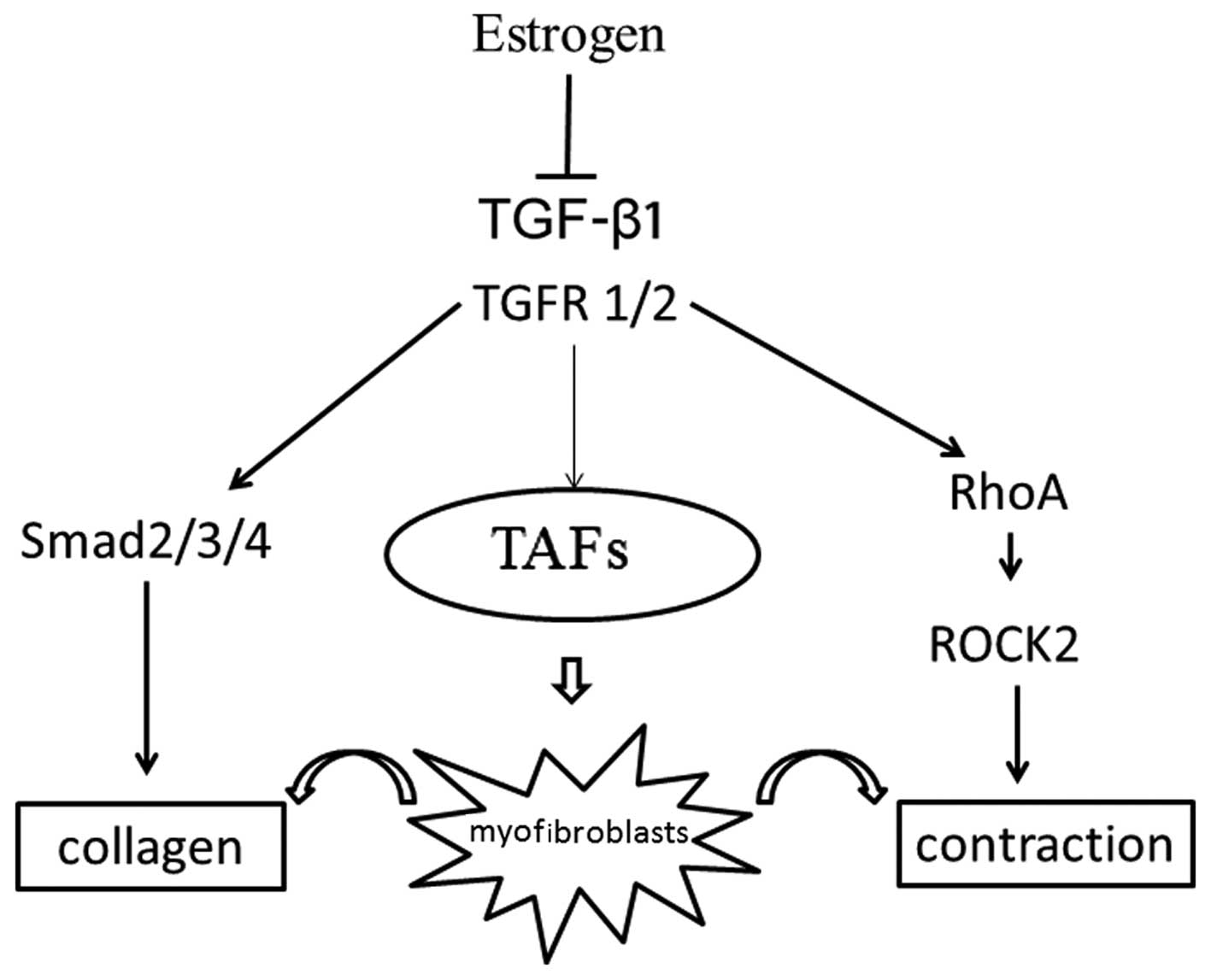|
1
|
Langston JP and Carson CC III: Peyronie's
disease: review and recent advances. Maturitas. 78:341–343. 2014.
View Article : Google Scholar : PubMed/NCBI
|
|
2
|
Jarow JP and Lowe FC: Penile trauma: an
etiologic factor in Peyronie's disease and erectile dysfunction. J
Urol. 158:1388–1390. 1997. View Article : Google Scholar : PubMed/NCBI
|
|
3
|
El-Sakka AI, Hassoba HM, Chui RM,
Bhatnagar RS, Dahiya R and Lue TF: An animal model of
Peyronie's-like condition associated with an increase of
transforming growth factor beta mRNA and protein expression. J
Urol. 158:2284–2290. 1997. View Article : Google Scholar : PubMed/NCBI
|
|
4
|
Valente EGA, Vernet D, Ferrini MG, Qian A,
Rajfer J and Gonzalez-Cadavid NF: L-arginine and phosphodiesterase
(PDE) inhibitors counteract fibrosis in the Peyronie's fibrotic
plaque and related fibroblast cultures. Nitric Oxide. 9:229–244.
2003. View Article : Google Scholar
|
|
5
|
Powell DW, Mifflin RC, Valentich JD, Crowe
SE, Saada JI and West AB: Myofibroblasts. I. Paracrine cells
important in health and disease. Am J Physiol. 277:C1–C9. 1999.
View Article : Google Scholar : PubMed/NCBI
|
|
6
|
Gelbard M: Myofibroblasts and
mechanotransduction: do forces in the tunica albuginea contribute
to Peyronie's disease? J Sex Med. 5:2974–2976. 2008. View Article : Google Scholar : PubMed/NCBI
|
|
7
|
Vernet D, Ferrini MG, Valente EG, Magee
TR, Bou-Gharios G, Rajfer J and Gonzalez-Cadavid NF: Effect of
nitric oxide on the differentiation of fibroblasts into
myofibroblasts in the Peyronie's fibrotic plaque and in its rat
model. Nitric Oxide. 7:262–276. 2002. View Article : Google Scholar : PubMed/NCBI
|
|
8
|
Derynck R and Zhang YE: Smad-dependent and
Smad- independent pathways in TGF-beta family signalling. Nature.
425:577–584. 2003. View Article : Google Scholar : PubMed/NCBI
|
|
9
|
Li JH, Zhu HJ, Huang XR, Lai KN, Johnson
RJ and Lan HY: Smad7 inhibits fibrotic effect of TGF-Beta on renal
tubular epithelial cells by blocking Smad2 activation. J Am Soc
Nephrol. 13:1464–1472. 2002. View Article : Google Scholar : PubMed/NCBI
|
|
10
|
Schofield AV and Bernard O: Rho-associated
coiled-coil kinase (ROCK) signaling and disease. Crit Rev Biochem
Mol Biol. 48:301–316. 2013. View Article : Google Scholar : PubMed/NCBI
|
|
11
|
Di Martino V, Lebray P, Myers RP, Pannier
E, Paradis V, Charlotte F, Moussalli J, Thabut D, Buffet C and
Poynard T: Progression of liver fibrosis in women infected with
hepatitis C: long-term benefit of estrogen exposure. Hepatology.
40:1426–1433. 2004. View Article : Google Scholar : PubMed/NCBI
|
|
12
|
Yang JD, Abdelmalek MF, Pang H, Guy CD,
Smith AD, Diehl AM and Suzuki A: Gender and menopause impact
severity of fibrosis among patients with nonalcoholic
steatohepatitis. Hepatology. 59:1406–1414. 2014. View Article : Google Scholar :
|
|
13
|
Smyk DS, Rigopoulou EI, Pares A, Billinis
C, Burroughs AK, Muratori L, Invernizzi P and Bogdanos DP: Sex
differences associated with primary biliary cirrhosis. Clin Dev
Immunol. 2012:6105042012. View Article : Google Scholar : PubMed/NCBI
|
|
14
|
Pedram A, Razandi M, O'Mahony F, Lubahn D
and Levin ER: Estrogen receptor-beta prevents cardiac fibrosis. Mol
Endocrinol. 24:2152–2165. 2010. View Article : Google Scholar : PubMed/NCBI
|
|
15
|
Morani A, Barros RPA, Imamov O, Hultenby
K, Arner A, Warner M and Gustafsson JA: Lung dysfunction causes
systemic hypoxia in estrogen receptor beta knockout
(ERbeta−/−) mice. Proc Natl Acad Sci USA. 103:7165–7169.
2006. View Article : Google Scholar
|
|
16
|
Dixon A and Maric C: 17beta-Estradiol
attenuates diabetic kidney disease by regulating extracellular
matrix and transforming growth factor-beta protein expression and
signaling. Am J Physiol Renal Physiol. 293:F1678–F1690. 2007.
View Article : Google Scholar : PubMed/NCBI
|
|
17
|
Novotný M, Vasilenko T, Varinská L,
Smetana K Jr, Szabo P, Sarišský M, Dvořánková B, Mojžiš J, Bobrov
N, Toporcerová S, et al: ER-α agonist induces conversion of
fibroblasts into myofibroblasts, while ER-β agonist increases ECM
production and wound tensile strength of healing skin wounds in
ovariectomised rats. Exp Dermatol. 20:703–708. 2011. View Article : Google Scholar
|
|
18
|
Ahuja SK, Sikka SC and Hellstrom WJG:
Stimulation of collagen production in an in vitro model for
Peyronie's disease. Int J Impot Res. 11:207–212. 1999. View Article : Google Scholar : PubMed/NCBI
|
|
19
|
Illsley MC, Peacock JH, McAnulty RJ and
Yarnold JR: Increased collagen production in fibroblasts cultured
from irradiated skin and effect of TGF beta(1)- clinical study. Br
J Cancer. 83:650–654. 2000. View Article : Google Scholar : PubMed/NCBI
|
|
20
|
Wong M and Mudera V: Feedback inhibition
of high TGF-beta1 concentrations on myofibroblast induction and
contraction by Dupuytren's fibroblasts. J Hand Surg Br. 31:473–483.
2006. View Article : Google Scholar : PubMed/NCBI
|
|
21
|
Kumar A, Ruan M, Clifton K, Syed F, Khosla
S and Oursler MJ: TGF-β mediates suppression of adipogenesis by
estradiol through connective tissue growth factor induction.
Endocrinology. 153:254–263. 2012. View Article : Google Scholar :
|
|
22
|
Woessner JF Jr: The determination of
hydroxyproline in tissue and protein samples containing small
proportions of this amino acid. Arch Biochem Biophys. 93:440–447.
1961. View Article : Google Scholar : PubMed/NCBI
|
|
23
|
Sun Z, Wang C, Shi C, Sun F, Xu X, Qian W,
Nie S and Han X: Activated Wnt signaling induces myofibroblast
differentiation of mesenchymal stem cells, contributing to
pulmonary fibrosis. Int J Mol Med. 33:1097–1109. 2014.PubMed/NCBI
|
|
24
|
Lauriol J, Keith K, Jaffré F, Couvillon A,
Saci A, Goonasekera SA, McCarthy JR, Kessinger CW, Wang J, Ke Q, et
al: RhoA signaling in cardiomyocytes protects against
stress-induced heart failure but facilitates cardiac fibrosis. Sci
Signal. 7:ra1002014. View Article : Google Scholar : PubMed/NCBI
|
|
25
|
Ji H, Tang H, Lin H, Mao J, Gao L, Liu J
and Wu T: Rho/Rock cross-talks with transforming growth
factor-β/Smad pathway participates in lung fibroblast-myofibroblast
differentiation. Biomed Rep. 2:787–792. 2014.PubMed/NCBI
|
|
26
|
Manickam N, Patel M, Griendling KK, Gorin
Y and Barnes JL: RhoA/Rho kinase mediates TGF-β1-induced kidney
myofibroblast activation through Poldip2/Nox4-derived reactive
oxygen species. Am J Physiol Renal Physiol. 307:F159–F171. 2014.
View Article : Google Scholar : PubMed/NCBI
|
|
27
|
Castiglione F, Hedlund P, Van der Aa F,
Bivalacqua TJ, Rigatti P, Van Poppel H, Montorsi F, De Ridder D and
Albersen M: Intratunical injection of human adipose tissue-derived
stem cells prevents fibrosis and is associated with improved
erectile function in a rat model of Peyronie's disease. Eur Urol.
63:551–560. 2013. View Article : Google Scholar
|
|
28
|
Gonzalez-Cadavid NF and Rajfer J:
Experimental models of Peyronie's disease. Implications for new
therapies. J Sex Med. 6:303–313. 2009. View Article : Google Scholar : PubMed/NCBI
|
|
29
|
McKenna TJ: Oestrogens for women: the
risk/benefit ratio. Ir Med J. 80:219–221. 1987.PubMed/NCBI
|
|
30
|
Studd J and Zamblera D: Estrogen therapy
in women over 60 years of age. Gynecol Endocrinol. 8:191–196. 1994.
View Article : Google Scholar : PubMed/NCBI
|
|
31
|
Hess RA, Bunick D, Lee KH, Bahr J, Taylor
JA, Korach KS and Lubahn DB: A role for oestrogens in the male
reproductive system. Nature. 390:509–512. 1997. View Article : Google Scholar : PubMed/NCBI
|
|
32
|
Hill RA, Pompolo S, Jones MEE, Simpson ER
and Boon WC: Estrogen deficiency leads to apoptosis in dopaminergic
neurons in the medial preoptic area and arcuate nucleus of male
mice. Mol Cell Neurosci. 27:466–476. 2004. View Article : Google Scholar : PubMed/NCBI
|
|
33
|
Gonzalez-Cadavid NF and Rajfer J:
Mechanisms of Disease: new insights into the cellular and molecular
pathology of Peyronie's disease. Nat Clin Pract Urol. 2:291–297.
2005. View Article : Google Scholar
|
|
34
|
Wu M, Han M, Li J, Xu X, Li T, Que L, Ha
T, Li C, Chen Q and Li Y: 17beta-estradiol inhibits angiotensin
II-induced cardiac myofibroblast differentiation. Eur J Pharmacol.
616:155–159. 2009. View Article : Google Scholar : PubMed/NCBI
|
|
35
|
Imaoka M, Jindo T and Takasaki W: The
process and development mechanism of age-related fibrosis in the
pancreatic islets of Sprague-Dawley rats: Immunohistochemical
detection of myofibroblasts and suppression effect by estrogen
treatment. J Toxicol Pathol. 26:1–10. 2013. View Article : Google Scholar : PubMed/NCBI
|
|
36
|
Matsuo SE, Fiore APZP, Siguematu SM, Ebina
KN, Friguglietti CU, Ferro MC, Kulcsar MA and Kimura ET: Expression
of SMAD proteins, TGF-beta/activin signaling mediators, in human
thyroid tissues. Arq Bras Endocrinol Metabol. 54:406–412. 2010.
View Article : Google Scholar : PubMed/NCBI
|
|
37
|
Yuan S-M, Wang J, Hu X-N, Li D-M and Jing
H: Transforming growth factor-β/Smad signaling function in the
aortopathies. Rev Bras Cir Cardiovasc. 26:393–403. 2011. View Article : Google Scholar : PubMed/NCBI
|
|
38
|
Dong C, Li H-J, Chang S, Liao HJ, Zhang
ZP, Huang P and Tang HH: A disintegrin and metalloprotease with
thrombos-pondin motif 2 may contribute to cirrhosis in humans
through the transforming growth factor-β/SMAD pathway. Gut Liver.
7:213–220. 2013. View Article : Google Scholar : PubMed/NCBI
|
|
39
|
Thumkeo D, Watanabe S and Narumiya S:
Physiological roles of Rho and Rho effectors in mammals. Eur J Cell
Biol. 92:303–315. 2013. View Article : Google Scholar : PubMed/NCBI
|
|
40
|
Fukata Y, Kimura K, Oshiro N, Saya H,
Matsuura Y and Kaibuchi K: Association of the myosin-binding
subunit of myosin phosphatase and moesin: dual regulation of moesin
phos-phorylation by Rho-associated kinase and myosin phosphatase. J
Cell Biol. 141:409–418. 1998. View Article : Google Scholar : PubMed/NCBI
|
|
41
|
Sopko NA, Hannan JL and Bivalacqua TJ:
Understanding and targeting the Rho kinase pathway in erectile
dysfunction. Nat Rev Urol. 11:622–628. 2014. View Article : Google Scholar : PubMed/NCBI
|















